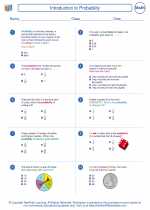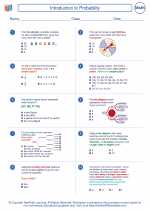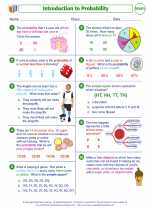Regular Patterns
Regular patterns are sequences or arrangements that follow a consistent and predictable order. These patterns can be found in various areas of mathematics, including number sequences, geometric shapes, and algebraic expressions. Understanding regular patterns can help in identifying and predicting trends, making predictions, and solving problems in mathematics and beyond.
Types of Regular Patterns
There are different types of regular patterns, including:
- Numeric Patterns: These involve sequences of numbers that follow a specific rule or operation. For example, the sequence 2, 4, 6, 8, ... follows the pattern of adding 2 to the previous number.
- Geometric Patterns: These involve shapes or designs that repeat in a predictable manner. Examples include tessellations and symmetrical designs.
- Algebraic Patterns: These involve sequences or expressions that follow a consistent rule or formula. For example, the sequence 3, 6, 12, 24, ... follows the pattern of multiplying by 2.
Study Tips
To understand and work with regular patterns, consider the following study tips:
- Identify the Rule: Try to identify the underlying rule or operation that governs the pattern. This could involve addition, multiplication, subtraction, or division.
- Extend the Pattern: Once you identify the rule, try to extend the pattern by predicting the next few terms or elements in the sequence. This can help reinforce your understanding of the pattern.
- Visualize the Pattern: For geometric patterns, visualizing the shapes or designs can help in understanding how they repeat and form a regular pattern.
- Practice with Examples: Work through various examples of regular patterns to strengthen your understanding and problem-solving skills.
Examples
Here are some examples of regular patterns:
Numeric Pattern: 3, 6, 9, 12, ... (Multiples of 3)
Geometric Pattern:  Geometric Pattern Example">
Geometric Pattern Example">
Algebraic Pattern: 2, 4, 8, 16, ... (Powers of 2)
Understanding regular patterns is essential for developing mathematical reasoning and problem-solving skills. By practicing and mastering the concepts of regular patterns, you can apply these skills to various mathematical problems and real-world scenarios.
.◂Math Worksheets and Study Guides Seventh Grade. Introduction to Probability

 Worksheet/Answer key
Worksheet/Answer key
 Worksheet/Answer key
Worksheet/Answer key
 Worksheet/Answer key
Worksheet/Answer key
 Worksheet/Answer key
Worksheet/Answer key
